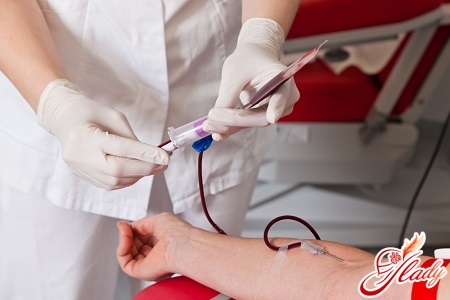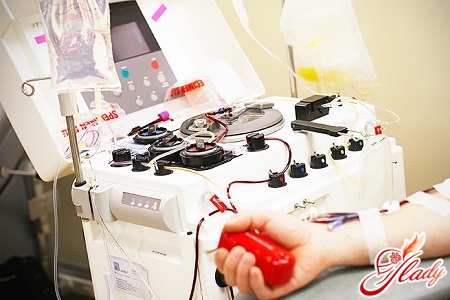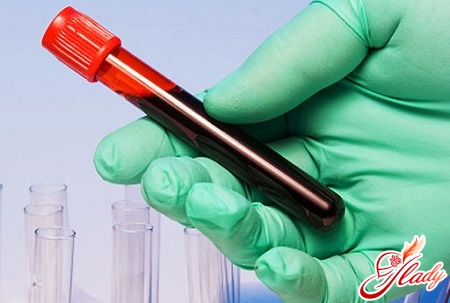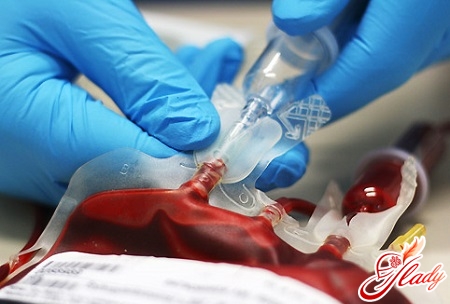
Today, throughout the world, including in theThousands of people die and die daily in our country. Very often the cause of death is acute blood loss. Almost any medical institution currently lacks donor blood. In many cities, special centers for transfusion and blood collection from donors are created, thereby replenishing the blood bank (stores). Blood reserves should be available in any hospital. It is desirable that it should be fresh and mandatory with not expired shelf life.
The relevance of this topic
Some people are regular donorsblood. Before you study the frequency of putting this important component, you need to understand some of the concepts. So, the donor is the person who gives the blood. It can be whole, in the form of plasma, erythrocyte or leukocyte mass. The acceptor is the person who perceives the missing blood from the donor, needs it. Blood transfusion is very often performed with leukemias and other blood diseases, severe injuries with blood loss, shocks and other urgent conditions. Let's consider in more detail, how often it is possible to donate blood, safety for health during this medical manipulation. But before that it is important to find out who can be a donor, because there are certain limitations. 
Who can become a blood donor?
In order for a person to donate blood, heshould be approached by certain criteria. First, his age should be from 18 to 60 years. This is very important, since it is during this period that the circulatory system becomes mature. Secondly, for most blood donation points it will be necessary to provide a local residence permit. This is necessary in order to know where to find this person, if necessary. Thirdly, you need a passport or other document proving your identity. Fourth, there are temporary restrictions that do not allow you to donate blood at the moment. These include the presence of colds or not expiration of 1 month from the day of recovery from ARI. It is not allowed to donate blood within 10 to 30 days after vaccination. After removing the teeth, it will also take 10 days to pass. After the birth of a child, drawing a tattoo or piercing, one should wait for 1 year. Separate provisions are for women. It is very important that during the donation the donor is not pregnant, at least 5 days must pass from the last menstrual period. In addition to temporary, there are also permanent reasons for refusing to donate. This includes: blood diseases, homosexual relationships, past viral hepatitis or present, the presence of promiscuous sexual relations with the donor, myopia, mental disorders, high blood pressure, drug addiction, alcoholism, syphilis, HIV infection and some others.
Periodicity of blood donation
Many will wonder: And how often can I donate blood? The answer is quite simple. The whole blood is officially allowed to be taken not more often than 5 times a year for males and not more than 4 times for women. It is very important that the intervals between these procedures are not less than 60 days, that is 2 months. All this is of great importance, since with more frequent blood donation, blood cells (red blood cells, leukocytes) do not have time to ripen fully, which can lead to slight anemia and poor health. Separately, it is necessary to single out the delivery of plasma. The fact is that today it is more often than not the whole blood that is being surrendered, but its components. This makes the work easier. As for the plasma, in the amount it is allowed to take no more than 12 liters per year. Plasma is a liquid part of the blood without uniform elements: erythrocytes, platelets and leukocytes. The delivery of the platelet mass is not allowed more than once a month, despite the fact that the platelets in the blood are restored within a week. Perhaps this is due to the fact that very often the dose of platelets taken with the help of special equipment is somewhat higher. It is very interesting and how much blood at a time in a voluminous ratio can be passed in one or another institution. The total dose is 400 ml. If a person does this for the first time, then it is only 200 ml. With some deviations in the state of health, the dose may decrease to 350 ml. 
Preparing for blood donation
Before taking the necessary material fromperson, he must undergo a rapid examination. It includes a blood test, a rhesus and group determination, a hemoglobin level. In addition, it will be necessary to measure the pressure, weight. Then a documentary agreement is made with the donor's painting. Of great importance is the fact that it is possible to donate blood of a certain weight (not less than 50 kg), it is important to take into account its appearance, the presence of depletion. Before the medical examination, it is recommended to prepare carefully for the procedure in a few days. To ensure that the blood is suitable for the patient, the following rules must be observed. Do not drink alcoholic beverages for 2 days before the manipulation, do not smoke for several hours before donating blood or plasma, since various harmful substances can enter the bloodstream. For 3 - 5 days you need to exclude the use of certain medications: aspirin, painkillers and so on. Before the procedure, you need to have breakfast and drink a glass of liquid. Of great importance is the diet. Excludes the use on the eve of blood sampling of products such as: eggs, milk and dairy products, cheese, butter, nuts, bananas, salted, sharp, fried and smoked dishes. Optimum use during this period of fruit, except bananas, vegetables, bread, cereals, fish, juices, sweet.
Influence of donation on the human body
It should be noted that donation is very useful. In addition to the financial side (payment for blood), thanks to this procedure, you can constantly and most importantly free to monitor your health. This is possible due to those analyzes that are taken before blood sampling. The second positive moment is an increase in immunity. At each fence of this or that component, the composition of the blood is renewed, and this ensures better circulation and blood supply of all organs and tissues. In addition, it is an excellent way to adapt to unfavorable factors, for example, blood loss, trauma. According to experts, male donors are 30% less likely to have heart attacks. Regular blood donation can increase the life expectancy of a person. It improves the metabolism, increases the effectiveness of the hematopoietic organs, increases the mobilization of body forces. But, nevertheless, donation is to some extent not safe. In this procedure, fainting and weakness are possible. However, all this is temporary. There is a risk of transmission of some infections, including HIV, hepatitis B and C, syphilis, but this is only possible if the technique of selection is violated. Paying for blood is another weighty argument. The cost of a portion of blood in Russia ranges from 300 - 400 rubles to one and a half thousand. In addition, the donor is supposed to have 2 days off: 1 - on the day of selection, and the second at the choice of the person. 
Conclusion, conclusions, recommendations
It can be concluded that donating bloodor its individual components - is not only beneficial, but also beneficial for the body. The frequency of delivery of whole blood depends on sex: for men it is no more than 5 times a year, for women - 4. It is important that the interval between the procedures is not less than 60 days. This time is necessary to restore and replenish the components of the bloodstream. You can surrender both whole blood and its constituent parts, for example, plasma. It is allowed to deliver plasma in a volume of no more than 12 liters per year. As for platelets, despite their rapid recovery, it is advisable to take them no more often than 1 time per month. The volume of a portion of blood can vary from 200 to 400 ml. Great value for the delivery of blood is the examination and preparation for this manipulation. It is strictly forbidden to carry out the procedure on a patient who has a history of HIV, hepatitis B and C, syphilis and some other infectious diseases. With proper blood sampling and careful examination, the risk of complications is practically absent for both the donor and the recipient.









